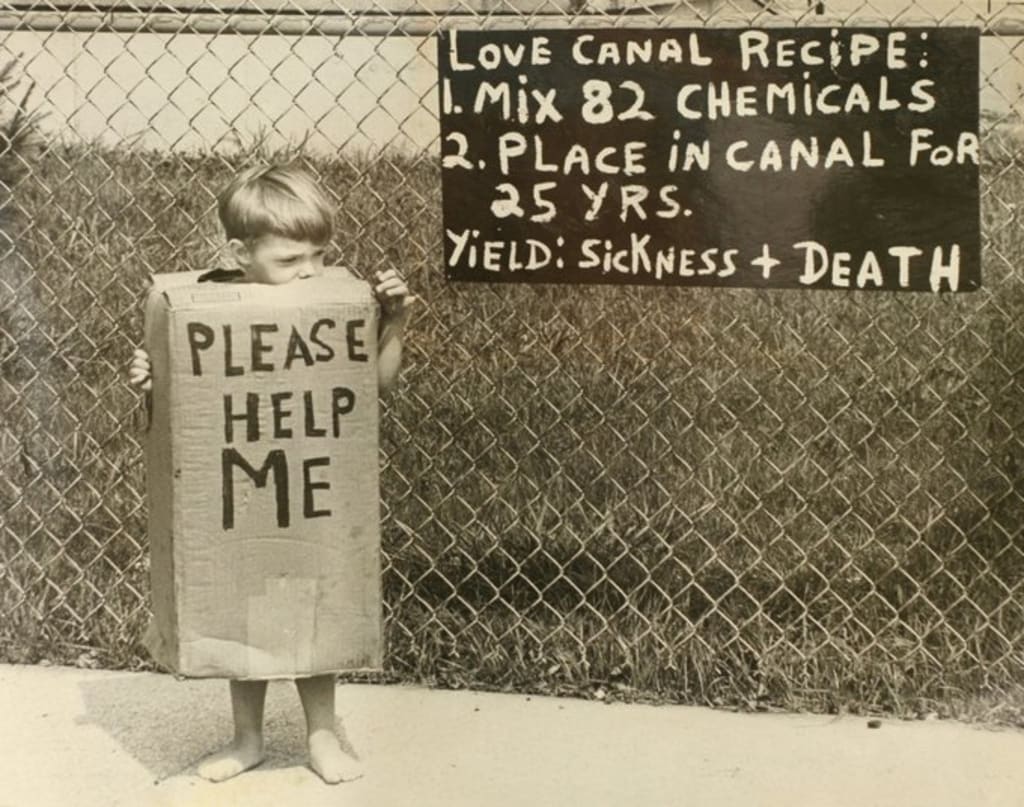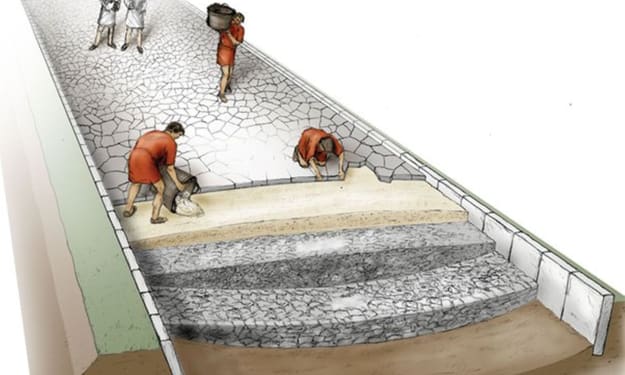The Love Canal Disaster
Toxic Legacy and Its Impact on a Community

From 1942 to 1953, the Hooker Chemical Company used an abandoned canal in Love Canal, New York, as a dumping ground for 21,000 tons of toxic chemical waste. This disposal site, chosen for its convenience and isolation, would later become the epicenter of one of the most infamous environmental disasters in American history. The catastrophe unfolded in the late 1970s, when chemicals began seeping into homes, yards, and school playgrounds, creating a hazardous living environment for the residents of Love Canal.
The problems at Love Canal began surfacing after years of heavy rains caused the toxic substances to breach their containment, forming dangerous puddles in residential areas. In 1978, The New York Times brought national attention to the crisis, reporting that the toxic chemicals had infiltrated the community, leading to severe health issues among its inhabitants.
The exposure to these hazardous chemicals resulted in alarmingly high rates of miscarriages, birth defects, and a host of chronic illnesses. Residents suffered from conditions such as epilepsy, asthma, severe migraines, and nephrosis—a serious kidney disease. The health crisis was so severe that it prompted President Jimmy Carter to take unprecedented action.
In 1978, President Carter declared a state of emergency, marking the first time in U.S. history that such a declaration was made for a non-natural disaster. The federal government intervened to relocate 239 families from the most affected areas, providing them with temporary housing and financial assistance. However, the initial evacuation was not enough to address the ongoing health risks.
Despite the evacuation of these families, many residents remained in the contaminated area, continuing to face the same health hazards. By 1981, it became evident that the contamination was more widespread and persistent than initially thought. President Carter declared a second state of emergency, leading to the evacuation of the remaining residents of Love Canal. This second evacuation was a clear acknowledgment of the severity and extent of the environmental disaster.
The history of Love Canal began in the late 19th century when entrepreneur William T. Love envisioned a canal that would connect the upper and lower Niagara Rivers, providing a source of cheap hydroelectric power. However, the project was abandoned in 1910 due to economic and logistical challenges. The site remained unused until the 1940s, when the Hooker Chemical Company, a subsidiary of Occidental Petroleum, began using it as a chemical waste dump.
Hooker Chemical filled the canal with a mixture of chemical byproducts, including benzene, dioxin, and a variety of other hazardous substances. By 1953, the canal was filled to capacity and subsequently covered with a clay cap and soil. Hooker then sold the land to the Niagara Falls School Board for one dollar, including a disclaimer about the presence of chemical waste. The land was later developed into a residential neighborhood, with homes and a school built directly on top of the former dump site.
For several decades, residents of Love Canal lived unaware of the toxic dangers lurking beneath their homes. It wasn't until the mid-1970s that the first signs of trouble emerged. Reports of noxious odors, strange substances oozing from the ground, and a noticeable increase in health problems among the community members began to surface. Children suffered from burns after playing in puddles, and gardens wilted from chemical exposure.
Public awareness and concern grew as local activists, including housewife-turned-activist Lois Gibbs, mobilized to demand action. Gibbs, whose children attended the 99th Street School built on the contaminated site, became a leading figure in the fight for justice. Her persistent advocacy and the mounting evidence of health hazards led to national media coverage and political pressure on the government to act.
The federal intervention led by President Carter marked a turning point in environmental policy and public health response in the United States. The Love Canal disaster highlighted the dangers of improper hazardous waste disposal and the need for stricter regulations. In response to the crisis, Congress enacted the Comprehensive Environmental Response, Compensation, and Liability Act (CERCLA) in 1980, commonly known as the Superfund law. This legislation aimed to identify and clean up the most hazardous waste sites in the country, holding polluters accountable for the environmental damage they caused.
The cleanup of Love Canal was a lengthy and complex process. Contaminated soil was removed, homes were demolished, and extensive remediation efforts were undertaken to decontaminate the area. The entire neighborhood was essentially dismantled, and the once-thriving community became a ghost town. The environmental and health legacy of Love Canal continued to affect former residents, many of whom suffered long-term health consequences.
The story of Love Canal is a cautionary tale of industrial negligence and the far-reaching impacts of environmental contamination. It underscores the critical importance of responsible waste management and the need for vigilant regulatory oversight to protect public health and the environment. The disaster also illustrated the power of grassroots activism and community organizing in bringing about change and holding powerful entities accountable.
In the decades following the Love Canal disaster, similar environmental issues have surfaced in other parts of the United States and around the world. The lessons learned from Love Canal have informed subsequent environmental policies and practices, emphasizing the need for transparency, accountability, and proactive measures to prevent such tragedies.
While Love Canal stands as a stark reminder of past failures, it also serves as a testament to the resilience of communities and the potential for positive change when citizens, activists, and governments work together. The legacy of Love Canal continues to influence environmental justice movements, inspiring ongoing efforts to ensure that all communities, regardless of socioeconomic status, are protected from environmental harm.
As we look back on the events of Love Canal, it is crucial to remember the human cost of this environmental disaster. The families who lived through the nightmare of toxic exposure, the children who suffered from preventable illnesses, and the activists who fought tirelessly for justice all play a vital role in this story. Their experiences serve as a powerful reminder of the need for vigilance in safeguarding our environment and health for future generations.
The Love Canal disaster represents one of the most significant environmental and public health crises in American history. The dumping of 21,000 tons of toxic chemical waste by the Hooker Chemical Company and the subsequent contamination of a residential neighborhood highlight the devastating consequences of industrial negligence. The federal government's unprecedented response, including the evacuation of hundreds of families and the enactment of the Superfund law, marked a turning point in environmental policy. The legacy of Love Canal continues to shape our understanding of environmental justice and the importance of protecting communities from hazardous waste.
About the Creator
Enjoyed the story? Support the Creator.
Subscribe for free to receive all their stories in your feed. You could also pledge your support or give them a one-off tip, letting them know you appreciate their work.






Comments
There are no comments for this story
Be the first to respond and start the conversation.